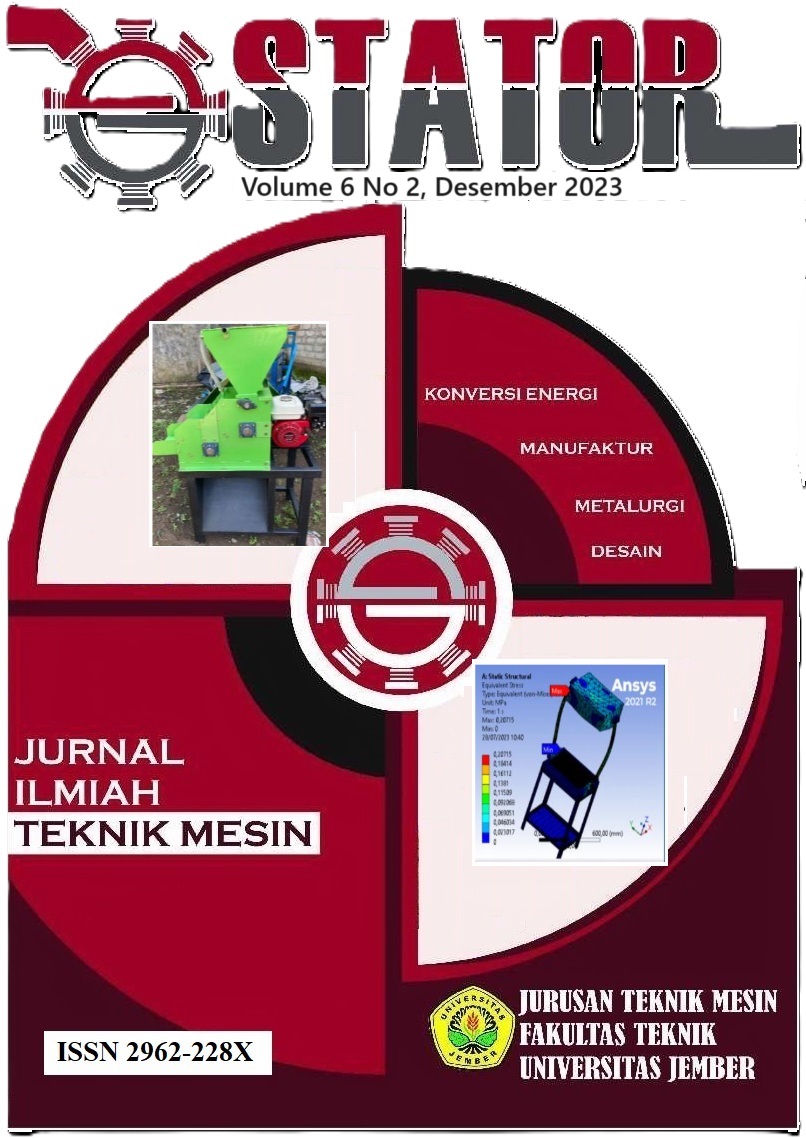ANALISIS KEKASARAN PERMUKAAN PADA PROSES PENGEBORAN ALUMINIUM 6061
Abstract
This research aims to determine the influence of spindle speed, tool diameter, and coolant on the surface roughness in the process of drilling Aluminum 6061 and identify the most optimal variable. Surface roughness is significantly affected by the spindle speed variable, which contributes to 46,47% of the outcome. The coolant variable contributes 31,17%, while the tool diameter variable has the smallest percentage contribution of 9,61%. The process variables for spindle speed (535 Rpm, 865 Rpm, 1520 Rpm) resulted in surface roughness values of (1,467 μm, 1,349 μm, 2,079 μm) respectively. For the tool diameter variable (8 mm, 10 mm, 12 mm), the surface roughness values were (1,765 μm, 1,701 μm, 1,429 μm) respectively. Regarding the coolant variable (water, dromus, oil), the surface roughness values were ((1,995 μm, 1,387 μm, 1,541 μm) respectively. The most optimal surface roughness was achieved with a spindle speed of 865 Rpm, resulting in a surface roughness value of 1.349 μm. Similarly, a tool diameter of 12 mm resulted in a surface roughness value of 1.429 μm, and the use of dromus as a coolant resulted in a surface roughness value of 1.387 μm. Keywords: Surface Roughness, Drilling, Aluminum 6061


